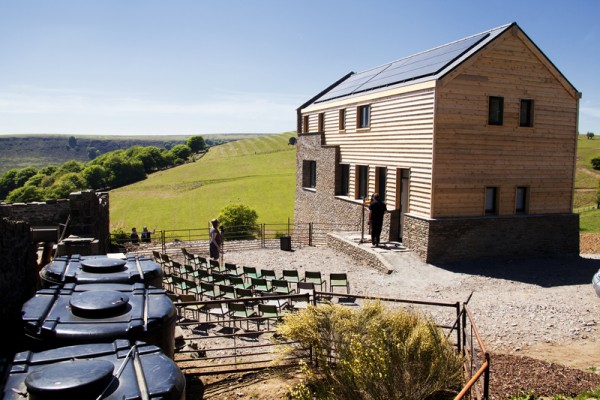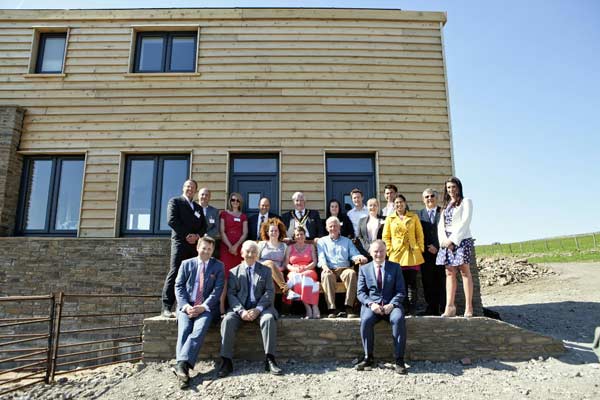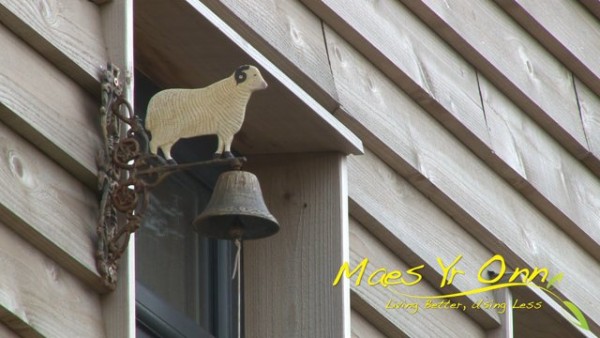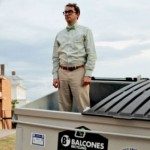Europe tends to remain one step ahead of America as a leader in sustainable living practices. Carcrphilly County Borough in Wales is no exception. When a local family made the risky decision to move from their comfy, modern home in Ebbw Vale to an off-the-grid farmhouse in Blackwood, the Carcrphilly County Borough Council’s Rural Development Plan Sustainable Energy Team saw a chance to help make the Davies’s self-sufficient dream a reality, encouraging rural settlement as well as ecologically responsible building.
The Davies family had lived on their farm, established in 1825, for thirty years, but unfortunately, the main farmhouse had fallen into disrepair, causing the family to have to live off-site. They desperately wanted to return to life on the farm, but their return was hampered by a lack of electricity, water, gas, or sewage services at the site. May, 2011, when the family received outline planning permission, was the starting point of a journey to build a completely off-the-grid home with no access to public electricity, gas, water, or sewage services.
The Davies and the Sustainable Energy Team partnered with the Building Research Establishment and SSE to plan and construct a sustainable, contemporary farmhouse to function as a family home. The resulting homestead, the award-winning Maes Yr Onn Farm, is the first totally sustainable property of its type within the county borough, and its description as self-sufficient may almost be an understatement.
The modern building is based on the traditional concept of the Welsh longhouse. Since the Davies moved into the farmhouse, the effectiveness of the ecological technologies have exceeded their initial expectations. Some of the sustainable features of the house include:
- Solar panels;
- Rainwater harvesting;
- A biomass boiler and thermal stores;
- Novel skirting board heating.
Making it through the first winter using only technologies like these, Arthur Davies says, “We’re very snug in our new home. It’s comfortable, warm, and all of the technologies are doing brilliantly so that we haven’t lost any quality of life. It’s amazing.”
One of the farmhouse’s features is its ability to generate its own energy through solar panels. Initially, it was estimated that the farmhouse would use around 7 kWh of energy daily, but the reality is much better. The house generates around 6.4 kWh of energy per day, but the family is only using about 1.4 kWh per day. In addition, the family uses only about 173 liters of water daily. Compare that with the average consumption for a family of three, 303 liters per day.
An energy-monitoring system by Constructing Excellence and the Rural Development Plan Team is ongoing and will help the Davies continue this sustainable lifestyle and learn best practices for future projects. Ken James, cabinet member of Regeneration, Planning, and Sustainable Development, emphasizes the importance of following the family’s progress and learn from any mistakes. “The figures say it all,” he says, “it is possible to live sustainably using renewable energy solutions without drastically affecting your lifestyle.”
America could take a cue from Wales as the country uses its plan for rural development to encourage sustainable living practices. Other countries are using a similar model for any new construction, but Wales is boosting its citizens’ space by actively helping them to spread out across the countryside and lessening their reliance on the government and natural resources.




 How a Harvard-Educated Professor Decided to Live in a Garbage Bin For a Year
How a Harvard-Educated Professor Decided to Live in a Garbage Bin For a Year Artist’s Eichler Home Goes Green with Solar Energy and Foam Roof
Artist’s Eichler Home Goes Green with Solar Energy and Foam Roof Old Sunnyvale Rancher Reincarnates into a Modern Passive House
Old Sunnyvale Rancher Reincarnates into a Modern Passive House